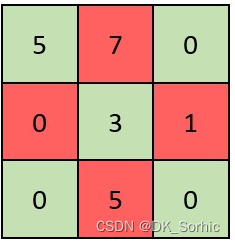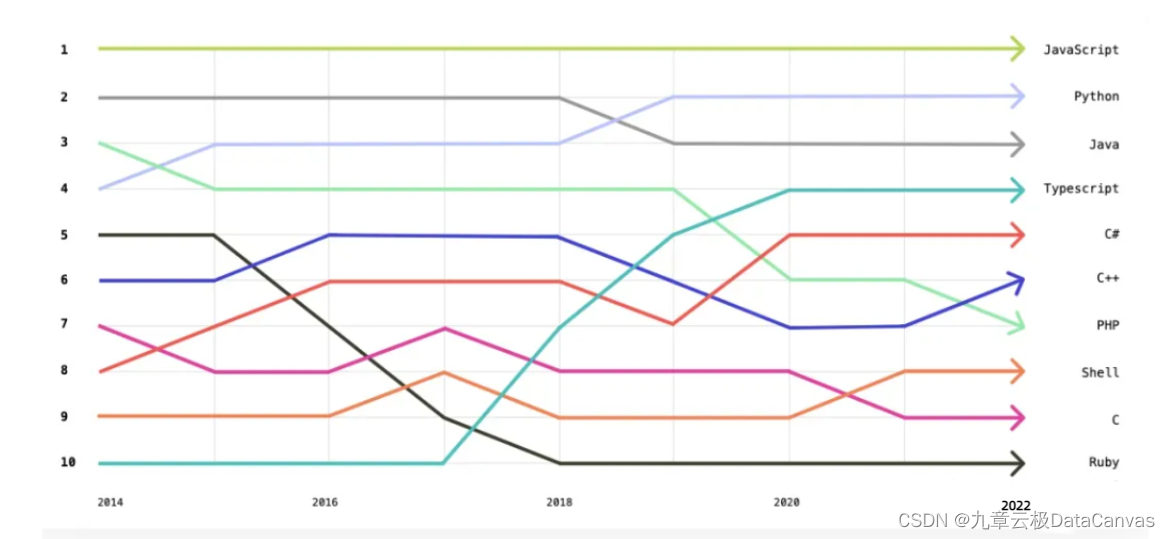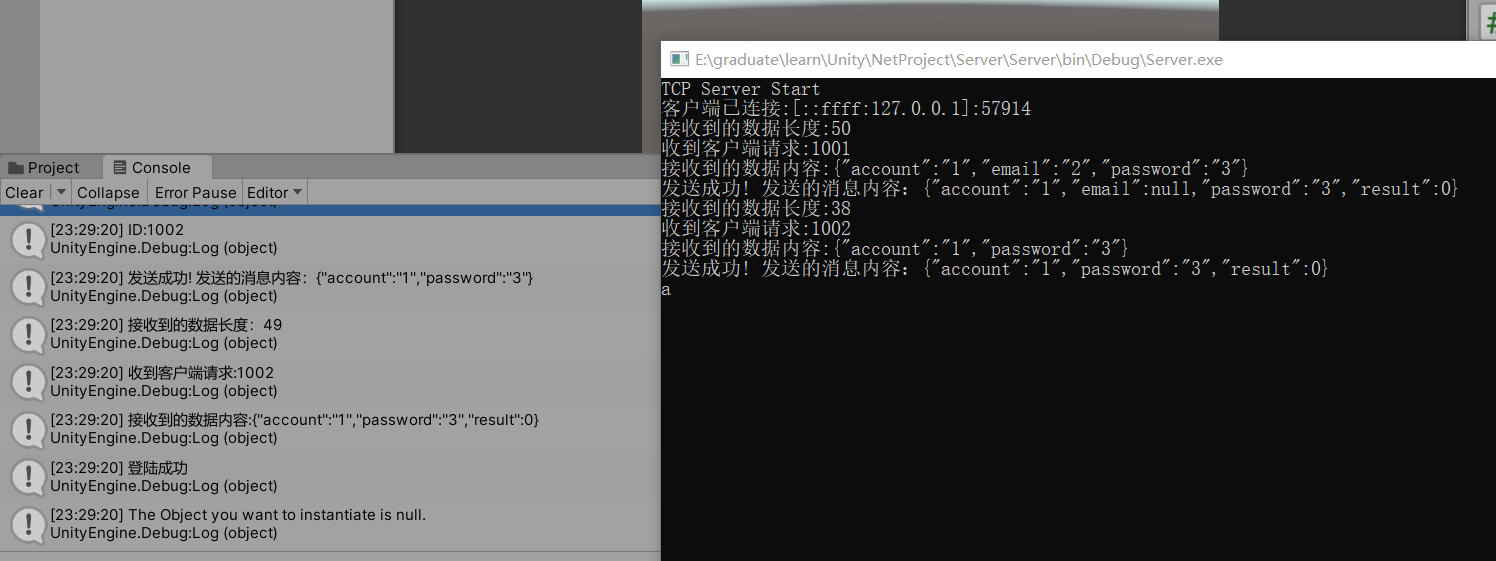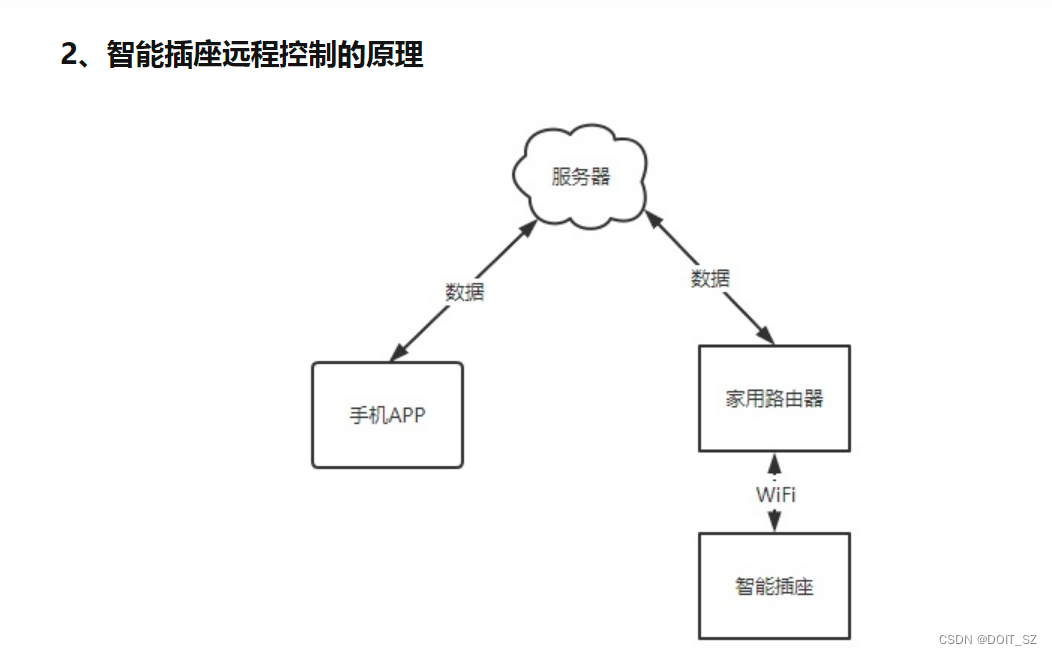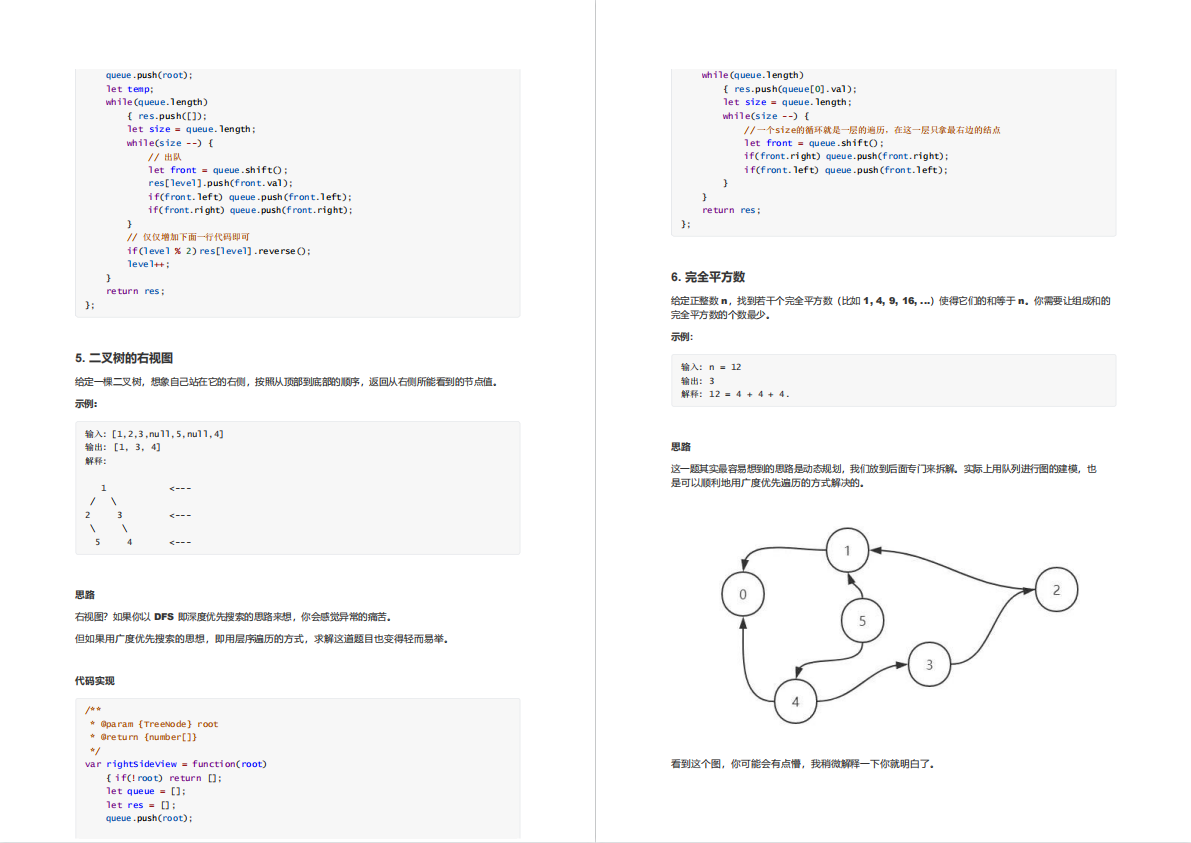本文主要介绍 二叉树中最基本的二叉查找树(Binary Search Tree),(又:二叉搜索树,二叉排序树)它或者是一棵空树,或者是具有下列性质的二叉树: 若它的左子树不空,则左子树上所有结点的值均小于它的根结点的值; 若它的右子树不空,则右子树上所有结点的值均大于它的根结点的值; 它的左、右子树也分别为二叉排序树。
BST的定义
在二叉查找树中:
若任意节点的左子树不空,则左子树上所有结点的值均小于它的根结点的值;
任意节点的右子树不空,则右子树上所有结点的值均大于它的根结点的值;
任意节点的左、右子树也分别为二叉查找树。
没有键值相等的节点。
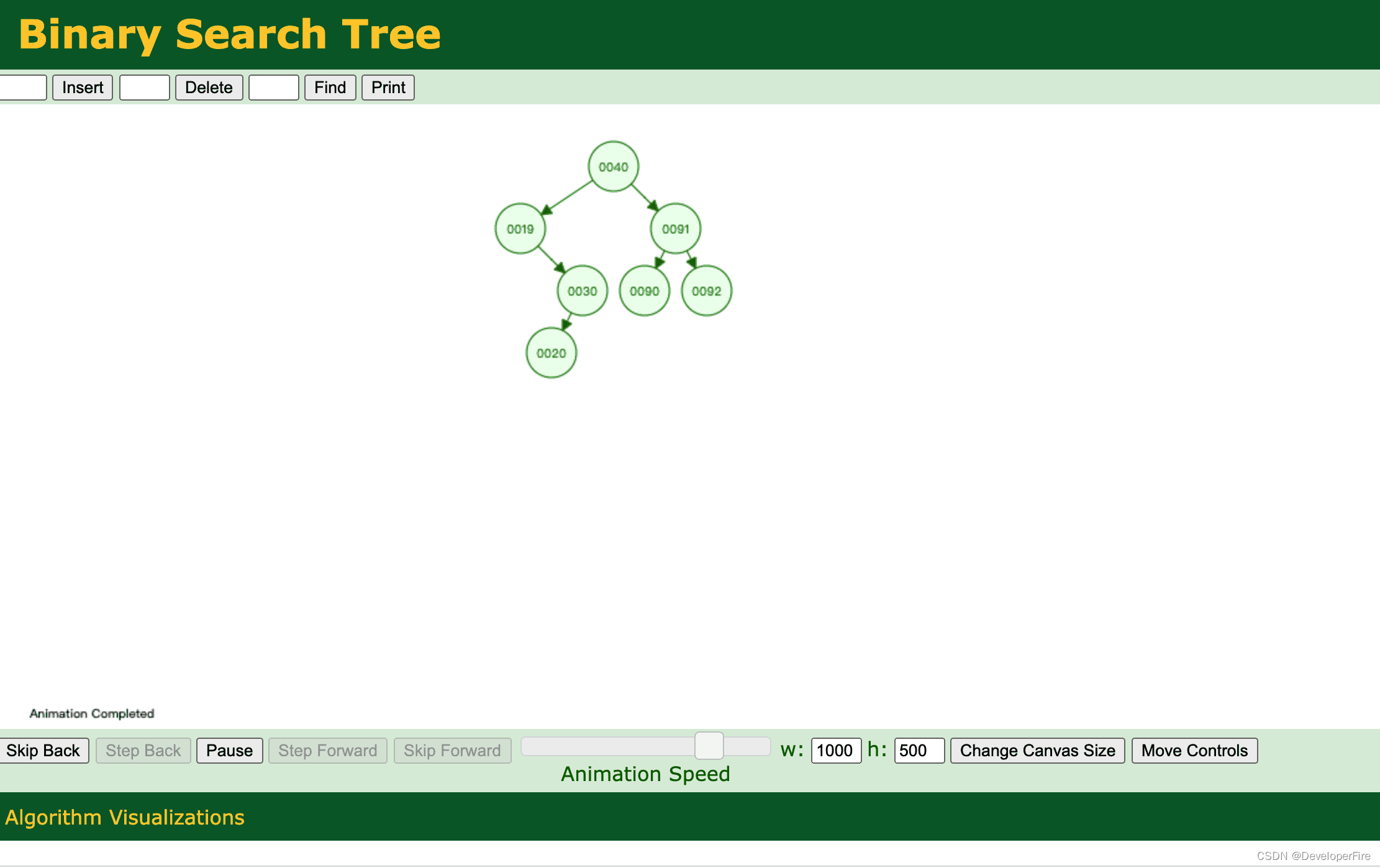
动画效果请参考 BST
BST的实现
节点
BSTree是二叉树,它保存了二叉树的根节点mRoot;mRoot是BSTNode类型,而BSTNode是二叉查找树的节点,它是BSTree的内部类。BSTNode包含二叉查找树的几个基本信息:
key -- 它是关键字,是用来对二叉查找树的节点进行排序的。
left -- 它指向当前节点的左孩子。
right -- 它指向当前节点的右孩子。
parent -- 它指向当前节点的父结点。
public class BSTree<T extends Comparable<T>> {
private BSTNode<T> mRoot; // 根结点
public class BSTNode<T extends Comparable<T>> {
T key; // 关键字(键值)
BSTNode<T> left; // 左孩子
BSTNode<T> right; // 右孩子
BSTNode<T> parent; // 父结点
public BSTNode(T key, BSTNode<T> parent, BSTNode<T> left, BSTNode<T> right) {
this.key = key;
this.parent = parent;
this.left = left;
this.right = right;
}
}
......
}遍历
这里讲解前序遍历、中序遍历、后序遍历3种方式。
前序遍历
若二叉树非空,则执行以下操作:
访问根结点;
先序遍历左子树;
先序遍历右子树。
private void preOrder(BSTNode<T> tree) {
if(tree != null) {
System.out.print(tree.key+" ");
preOrder(tree.left);
preOrder(tree.right);
}
}
public void preOrder() {
preOrder(mRoot);
}中序遍历
若二叉树非空,则执行以下操作:
中序遍历左子树;
访问根结点;
中序遍历右子树。
private void inOrder(BSTNode<T> tree) {
if(tree != null) {
inOrder(tree.left);
System.out.print(tree.key+" ");
inOrder(tree.right);
}
}
public void inOrder() {
inOrder(mRoot);
}后序遍历
若二叉树非空,则执行以下操作:
后序遍历左子树;
后序遍历右子树;
访问根结点。
private void postOrder(BSTNode<T> tree) {
if(tree != null)
{
postOrder(tree.left);
postOrder(tree.right);
System.out.print(tree.key+" ");
}
}
public void postOrder() {
postOrder(mRoot);
}看看下面这颗树的各种遍历方式:

对于上面的二叉树而言,
前序遍历结果: 8 3 1 6 4 7 10 14 13
中序遍历结果: 1 3 4 6 7 8 10 13 14
后序遍历结果: 1 4 7 6 3 13 14 10 8
查找
递归版本的代码
/*
* (递归实现)查找"二叉树x"中键值为key的节点
*/
private BSTNode<T> search(BSTNode<T> x, T key) {
if (x==null)
return x;
int cmp = key.compareTo(x.key);
if (cmp < 0)
return search(x.left, key);
else if (cmp > 0)
return search(x.right, key);
else
return x;
}
public BSTNode<T> search(T key) {
return search(mRoot, key);
}非递归版本的代码
/*
* (非递归实现)查找"二叉树x"中键值为key的节点
*/
private BSTNode<T> iterativeSearch(BSTNode<T> x, T key) {
while (x!=null) {
int cmp = key.compareTo(x.key);
if (cmp < 0)
x = x.left;
else if (cmp > 0)
x = x.right;
else
return x;
}
return x;
}
public BSTNode<T> iterativeSearch(T key) {
return iterativeSearch(mRoot, key);
}最大值和最小值

查找最大结点
/*
* 查找最大结点: 返回tree为根结点的二叉树的最大结点。
*/
private BSTNode<T> maximum(BSTNode<T> tree) {
if (tree == null)
return null;
while(tree.right != null)
tree = tree.right;
return tree;
}
public T maximum() {
BSTNode<T> p = maximum(mRoot);
if (p != null)
return p.key;
return null;
}查找最小结点
/*
* 查找最小结点: 返回tree为根结点的二叉树的最小结点。
*/
private BSTNode<T> minimum(BSTNode<T> tree) {
if (tree == null)
return null;
while(tree.left != null)
tree = tree.left;
return tree;
}
public T minimum() {
BSTNode<T> p = minimum(mRoot);
if (p != null)
return p.key;
return null;
}前驱和后继
节点的前驱: 是该节点的左子树中的最大节点。 节点的后继: 是该节点的右子树中的最小节点。
查找前驱节点
/*
* 找结点(x)的前驱结点。即,查找"二叉树中数据值小于该结点"的"最大结点"。
*/
public BSTNode<T> predecessor(BSTNode<T> x) {
// 如果x存在左孩子,则"x的前驱结点"为 "以其左孩子为根的子树的最大结点"。
if (x.left != null)
return maximum(x.left);
// 如果x没有左孩子。则x有以下两种可能:
// (01) x是"一个右孩子",则"x的前驱结点"为 "它的父结点"。
// (01) x是"一个左孩子",则查找"x的最低的父结点,并且该父结点要具有右孩子",找到的这个"最低的父结点"就是"x的前驱结点"。
BSTNode<T> y = x.parent;
while ((y!=null) && (x==y.left)) {
x = y;
y = y.parent;
}
return y;
}查找后继节点
/*
* 找结点(x)的后继结点。即,查找"二叉树中数据值大于该结点"的"最小结点"。
*/
public BSTNode<T> successor(BSTNode<T> x) {
// 如果x存在右孩子,则"x的后继结点"为 "以其右孩子为根的子树的最小结点"。
if (x.right != null)
return minimum(x.right);
// 如果x没有右孩子。则x有以下两种可能:
// (01) x是"一个左孩子",则"x的后继结点"为 "它的父结点"。
// (02) x是"一个右孩子",则查找"x的最低的父结点,并且该父结点要具有左孩子",找到的这个"最低的父结点"就是"x的后继结点"。
BSTNode<T> y = x.parent;
while ((y!=null) && (x==y.right)) {
x = y;
y = y.parent;
}
return y;
}插入
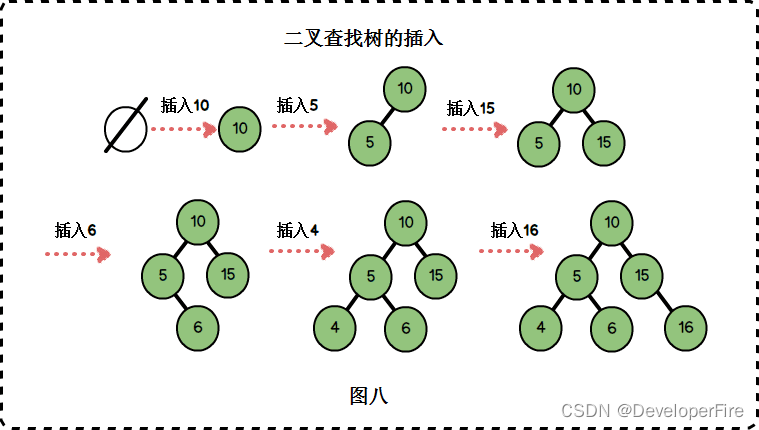
/*
* 将结点插入到二叉树中
*
* 参数说明:
* tree 二叉树的
* z 插入的结点
*/
private void insert(BSTree<T> bst, BSTNode<T> z) {
int cmp;
BSTNode<T> y = null;
BSTNode<T> x = bst.mRoot;
// 查找z的插入位置
while (x != null) {
y = x;
cmp = z.key.compareTo(x.key);
if (cmp < 0)
x = x.left;
else
x = x.right;
}
z.parent = y;
if (y==null)
bst.mRoot = z;
else {
cmp = z.key.compareTo(y.key);
if (cmp < 0)
y.left = z;
else
y.right = z;
}
}
/*
* 新建结点(key),并将其插入到二叉树中
*
* 参数说明:
* tree 二叉树的根结点
* key 插入结点的键值
*/
public void insert(T key) {
BSTNode<T> z=new BSTNode<T>(key,null,null,null);
// 如果新建结点失败,则返回。
if (z != null)
insert(this, z);
}删除

/*
* 删除结点(z),并返回被删除的结点
*
* 参数说明:
* bst 二叉树
* z 删除的结点
*/
private BSTNode<T> remove(BSTree<T> bst, BSTNode<T> z) {
BSTNode<T> x=null;
BSTNode<T> y=null;
if ((z.left == null) || (z.right == null) )
y = z;
else
y = successor(z);
if (y.left != null)
x = y.left;
else
x = y.right;
if (x != null)
x.parent = y.parent;
if (y.parent == null)
bst.mRoot = x;
else if (y == y.parent.left)
y.parent.left = x;
else
y.parent.right = x;
if (y != z)
z.key = y.key;
return y;
}
/*
* 删除结点(z),并返回被删除的结点
*
* 参数说明:
* tree 二叉树的根结点
* z 删除的结点
*/
public void remove(T key) {
BSTNode<T> z, node;
if ((z = search(mRoot, key)) != null)
if ( (node = remove(this, z)) != null)
node = null;
}打印
/*
* 打印"二叉查找树"
*
* key -- 节点的键值
* direction -- 0,表示该节点是根节点;
* -1,表示该节点是它的父结点的左孩子;
* 1,表示该节点是它的父结点的右孩子。
*/
private void print(BSTNode<T> tree, T key, int direction) {
if(tree != null) {
if(direction==0) // tree是根节点
System.out.printf("%2d is root\n", tree.key);
else // tree是分支节点
System.out.printf("%2d is %2d's %6s child\n", tree.key, key, direction==1?"right" : "left");
print(tree.left, tree.key, -1);
print(tree.right,tree.key, 1);
}
}
public void print() {
if (mRoot != null)
print(mRoot, mRoot.key, 0);
}销毁
/*
* 销毁二叉树
*/
private void destroy(BSTNode<T> tree) {
if (tree==null)
return ;
if (tree.left != null)
destroy(tree.left);
if (tree.right != null)
destroy(tree.right);
tree=null;
}
public void clear() {
destroy(mRoot);
mRoot = null;
}测试程序
下面对测试程序的流程进行分析!
新建"二叉查找树"root。
向二叉查找树中依次插入1,5,4,3,2,6 。如下图所示:

遍历和查找
插入1,5,4,3,2,6之后,得到的二叉查找树如下:

前序遍历结果: 154326
中序遍历结果: 123456
后序遍历结果: 234651
最小值是1,而最大值是6。删除节点4。如下图所示:

重新遍历该二叉查找树。
中序遍历结果: 1 2 4 5 6
代码和测试代码
代码实现
/**
* Java 语言: 二叉查找树
*
* @author skywang
* @date 2013/11/07
*/
public class BSTree<T extends Comparable<T>> {
private BSTNode<T> mRoot; // 根结点
public class BSTNode<T extends Comparable<T>> {
T key; // 关键字(键值)
BSTNode<T> left; // 左孩子
BSTNode<T> right; // 右孩子
BSTNode<T> parent; // 父结点
public BSTNode(T key, BSTNode<T> parent, BSTNode<T> left, BSTNode<T> right) {
this.key = key;
this.parent = parent;
this.left = left;
this.right = right;
}
public T getKey() {
return key;
}
public String toString() {
return "key:"+key;
}
}
public BSTree() {
mRoot=null;
}
/*
* 前序遍历"二叉树"
*/
private void preOrder(BSTNode<T> tree) {
if(tree != null) {
System.out.print(tree.key+" ");
preOrder(tree.left);
preOrder(tree.right);
}
}
public void preOrder() {
preOrder(mRoot);
}
/*
* 中序遍历"二叉树"
*/
private void inOrder(BSTNode<T> tree) {
if(tree != null) {
inOrder(tree.left);
System.out.print(tree.key+" ");
inOrder(tree.right);
}
}
public void inOrder() {
inOrder(mRoot);
}
/*
* 后序遍历"二叉树"
*/
private void postOrder(BSTNode<T> tree) {
if(tree != null)
{
postOrder(tree.left);
postOrder(tree.right);
System.out.print(tree.key+" ");
}
}
public void postOrder() {
postOrder(mRoot);
}
/*
* (递归实现)查找"二叉树x"中键值为key的节点
*/
private BSTNode<T> search(BSTNode<T> x, T key) {
if (x==null)
return x;
int cmp = key.compareTo(x.key);
if (cmp < 0)
return search(x.left, key);
else if (cmp > 0)
return search(x.right, key);
else
return x;
}
public BSTNode<T> search(T key) {
return search(mRoot, key);
}
/*
* (非递归实现)查找"二叉树x"中键值为key的节点
*/
private BSTNode<T> iterativeSearch(BSTNode<T> x, T key) {
while (x!=null) {
int cmp = key.compareTo(x.key);
if (cmp < 0)
x = x.left;
else if (cmp > 0)
x = x.right;
else
return x;
}
return x;
}
public BSTNode<T> iterativeSearch(T key) {
return iterativeSearch(mRoot, key);
}
/*
* 查找最小结点: 返回tree为根结点的二叉树的最小结点。
*/
private BSTNode<T> minimum(BSTNode<T> tree) {
if (tree == null)
return null;
while(tree.left != null)
tree = tree.left;
return tree;
}
public T minimum() {
BSTNode<T> p = minimum(mRoot);
if (p != null)
return p.key;
return null;
}
/*
* 查找最大结点: 返回tree为根结点的二叉树的最大结点。
*/
private BSTNode<T> maximum(BSTNode<T> tree) {
if (tree == null)
return null;
while(tree.right != null)
tree = tree.right;
return tree;
}
public T maximum() {
BSTNode<T> p = maximum(mRoot);
if (p != null)
return p.key;
return null;
}
/*
* 找结点(x)的后继结点。即,查找"二叉树中数据值大于该结点"的"最小结点"。
*/
public BSTNode<T> successor(BSTNode<T> x) {
// 如果x存在右孩子,则"x的后继结点"为 "以其右孩子为根的子树的最小结点"。
if (x.right != null)
return minimum(x.right);
// 如果x没有右孩子。则x有以下两种可能:
// (01) x是"一个左孩子",则"x的后继结点"为 "它的父结点"。
// (02) x是"一个右孩子",则查找"x的最低的父结点,并且该父结点要具有左孩子",找到的这个"最低的父结点"就是"x的后继结点"。
BSTNode<T> y = x.parent;
while ((y!=null) && (x==y.right)) {
x = y;
y = y.parent;
}
return y;
}
/*
* 找结点(x)的前驱结点。即,查找"二叉树中数据值小于该结点"的"最大结点"。
*/
public BSTNode<T> predecessor(BSTNode<T> x) {
// 如果x存在左孩子,则"x的前驱结点"为 "以其左孩子为根的子树的最大结点"。
if (x.left != null)
return maximum(x.left);
// 如果x没有左孩子。则x有以下两种可能:
// (01) x是"一个右孩子",则"x的前驱结点"为 "它的父结点"。
// (01) x是"一个左孩子",则查找"x的最低的父结点,并且该父结点要具有右孩子",找到的这个"最低的父结点"就是"x的前驱结点"。
BSTNode<T> y = x.parent;
while ((y!=null) && (x==y.left)) {
x = y;
y = y.parent;
}
return y;
}
/*
* 将结点插入到二叉树中
*
* 参数说明:
* tree 二叉树的
* z 插入的结点
*/
private void insert(BSTree<T> bst, BSTNode<T> z) {
int cmp;
BSTNode<T> y = null;
BSTNode<T> x = bst.mRoot;
// 查找z的插入位置
while (x != null) {
y = x;
cmp = z.key.compareTo(x.key);
if (cmp < 0)
x = x.left;
else
x = x.right;
}
z.parent = y;
if (y==null)
bst.mRoot = z;
else {
cmp = z.key.compareTo(y.key);
if (cmp < 0)
y.left = z;
else
y.right = z;
}
}
/*
* 新建结点(key),并将其插入到二叉树中
*
* 参数说明:
* tree 二叉树的根结点
* key 插入结点的键值
*/
public void insert(T key) {
BSTNode<T> z=new BSTNode<T>(key,null,null,null);
// 如果新建结点失败,则返回。
if (z != null)
insert(this, z);
}
/*
* 删除结点(z),并返回被删除的结点
*
* 参数说明:
* bst 二叉树
* z 删除的结点
*/
private BSTNode<T> remove(BSTree<T> bst, BSTNode<T> z) {
BSTNode<T> x=null;
BSTNode<T> y=null;
if ((z.left == null) || (z.right == null) )
y = z;
else
y = successor(z);
if (y.left != null)
x = y.left;
else
x = y.right;
if (x != null)
x.parent = y.parent;
if (y.parent == null)
bst.mRoot = x;
else if (y == y.parent.left)
y.parent.left = x;
else
y.parent.right = x;
if (y != z)
z.key = y.key;
return y;
}
/*
* 删除结点(z),并返回被删除的结点
*
* 参数说明:
* tree 二叉树的根结点
* z 删除的结点
*/
public void remove(T key) {
BSTNode<T> z, node;
if ((z = search(mRoot, key)) != null)
if ( (node = remove(this, z)) != null)
node = null;
}
/*
* 销毁二叉树
*/
private void destroy(BSTNode<T> tree) {
if (tree==null)
return ;
if (tree.left != null)
destroy(tree.left);
if (tree.right != null)
destroy(tree.right);
tree=null;
}
public void clear() {
destroy(mRoot);
mRoot = null;
}
/*
* 打印"二叉查找树"
*
* key -- 节点的键值
* direction -- 0,表示该节点是根节点;
* -1,表示该节点是它的父结点的左孩子;
* 1,表示该节点是它的父结点的右孩子。
*/
private void print(BSTNode<T> tree, T key, int direction) {
if(tree != null) {
if(direction==0) // tree是根节点
System.out.printf("%2d is root\n", tree.key);
else // tree是分支节点
System.out.printf("%2d is %2d's %6s child\n", tree.key, key, direction==1?"right" : "left");
print(tree.left, tree.key, -1);
print(tree.right,tree.key, 1);
}
}
public void print() {
if (mRoot != null)
print(mRoot, mRoot.key, 0);
}
}测试代码
/**
* Java 语言: 二叉查找树
*
* @author skywang
* @date 2013/11/07
*/
public class BSTreeTest {
private static final int arr[] = {1,5,4,3,2,6};
public static void main(String[] args) {
int i, ilen;
BSTree<Integer> tree=new BSTree<Integer>();
System.out.print("== 依次添加: ");
ilen = arr.length;
for(i=0; i<ilen; i++) {
System.out.print(arr[i]+" ");
tree.insert(arr[i]);
}
System.out.print("\n== 前序遍历: ");
tree.preOrder();
System.out.print("\n== 中序遍历: ");
tree.inOrder();
System.out.print("\n== 后序遍历: ");
tree.postOrder();
System.out.println();
System.out.println("== 最小值: "+ tree.minimum());
System.out.println("== 最大值: "+ tree.maximum());
System.out.println("== 树的详细信息: ");
tree.print();
System.out.print("\n== 删除根节点: "+ arr[3]);
tree.remove(arr[3]);
System.out.print("\n== 中序遍历: ");
tree.inOrder();
System.out.println();
// 销毁二叉树
tree.clear();
}
}测试结果
== 依次添加: 1 5 4 3 2 6
== 前序遍历: 1 5 4 3 2 6
== 中序遍历: 1 2 3 4 5 6
== 后序遍历: 2 3 4 6 5 1
== 最小值: 1
== 最大值: 6
== 树的详细信息:
is root
is 1's right child
is 5's left child
is 4's left child
is 3's left child
is 5's right child
== 删除根节点: 3
== 中序遍历: 1 2 4 5 6BST相关题目
二叉查找树(BST): 根节点大于等于左子树所有节点,小于等于右子树所有节点。
二叉查找树中序遍历有序。
修剪二叉查找树
669. Trim a Binary Search Tree (Easy)
Input:
3
/ \
0 4
\
2
/
1
L = 1
R = 3
Output:
3
/
2
/
1题目描述: 只保留值在 L ~ R 之间的节点
public TreeNode trimBST(TreeNode root, int L, int R) {
if (root == null) return null;
if (root.val > R) return trimBST(root.left, L, R);
if (root.val < L) return trimBST(root.right, L, R);
root.left = trimBST(root.left, L, R);
root.right = trimBST(root.right, L, R);
return root;
}寻找二叉查找树的第 k 个元素
230. Kth Smallest Element in a BST (Medium)
中序遍历解法:
private int cnt = 0;
private int val;
public int kthSmallest(TreeNode root, int k) {
inOrder(root, k);
return val;
}
private void inOrder(TreeNode node, int k) {
if (node == null) return;
inOrder(node.left, k);
cnt++;
if (cnt == k) {
val = node.val;
return;
}
inOrder(node.right, k);
}递归解法:
public int kthSmallest(TreeNode root, int k) {
int leftCnt = count(root.left);
if (leftCnt == k - 1) return root.val;
if (leftCnt > k - 1) return kthSmallest(root.left, k);
return kthSmallest(root.right, k - leftCnt - 1);
}
private int count(TreeNode node) {
if (node == null) return 0;
return 1 + count(node.left) + count(node.right);
}把二叉查找树每个节点的值都加上比它大的节点的值
Convert BST to Greater Tree (Easy)
Input: The root of a Binary Search Tree like this:
5
/ \
2 13
Output: The root of a Greater Tree like this:
18
/ \
20 13先遍历右子树。
private int sum = 0;
public TreeNode convertBST(TreeNode root) {
traver(root);
return root;
}
private void traver(TreeNode node) {
if (node == null) return;
traver(node.right);
sum += node.val;
node.val = sum;
traver(node.left);
}二叉查找树的最近公共祖先
235. Lowest Common Ancestor of a Binary Search Tree (Easy)
_______6______
/ \
___2__ ___8__
/ \ / \
0 4 7 9
/ \
3 5
For example, the lowest common ancestor (LCA) of nodes 2 and 8 is 6. Another example is LCA of nodes 2 and 4 is 2, since a node can be a descendant of itself according to the LCA definition.public TreeNode lowestCommonAncestor(TreeNode root, TreeNode p, TreeNode q) {
if (root.val > p.val && root.val > q.val) return lowestCommonAncestor(root.left, p, q);
if (root.val < p.val && root.val < q.val) return lowestCommonAncestor(root.right, p, q);
return root;
}二叉树的最近公共祖先
236. Lowest Common Ancestor of a Binary Tree (Medium)
_______3______
/ \
___5__ ___1__
/ \ / \
6 2 0 8
/ \
7 4
For example, the lowest common ancestor (LCA) of nodes 5 and 1 is 3. Another example is LCA of nodes 5 and 4 is 5, since a node can be a descendant of itself according to the LCA definition.public TreeNode lowestCommonAncestor(TreeNode root, TreeNode p, TreeNode q) {
if (root == null || root == p || root == q) return root;
TreeNode left = lowestCommonAncestor(root.left, p, q);
TreeNode right = lowestCommonAncestor(root.right, p, q);
return left == null ? right : right == null ? left : root;
}从有序数组中构造二叉查找树
108. Convert Sorted Array to Binary Search Tree (Easy)
public TreeNode sortedArrayToBST(int[] nums) {
return toBST(nums, 0, nums.length - 1);
}
private TreeNode toBST(int[] nums, int sIdx, int eIdx){
if (sIdx > eIdx) return null;
int mIdx = (sIdx + eIdx) / 2;
TreeNode root = new TreeNode(nums[mIdx]);
root.left = toBST(nums, sIdx, mIdx - 1);
root.right = toBST(nums, mIdx + 1, eIdx);
return root;
}根据有序链表构造平衡的二叉查找树
109. Convert Sorted List to Binary Search Tree (Medium)
Given the sorted linked list: [-10,-3,0,5,9],
One possible answer is: [0,-3,9,-10,null,5], which represents the following height balanced BST:
0
/ \
-3 9
/ /
-10 5public TreeNode sortedListToBST(ListNode head) {
if (head == null) return null;
if (head.next == null) return new TreeNode(head.val);
ListNode preMid = preMid(head);
ListNode mid = preMid.next;
preMid.next = null; // 断开链表
TreeNode t = new TreeNode(mid.val);
t.left = sortedListToBST(head);
t.right = sortedListToBST(mid.next);
return t;
}
private ListNode preMid(ListNode head) {
ListNode slow = head, fast = head.next;
ListNode pre = head;
while (fast != null && fast.next != null) {
pre = slow;
slow = slow.next;
fast = fast.next.next;
}
return pre;
}在二叉查找树中寻找两个节点,使它们的和为一个给定值
653. Two Sum IV - Input is a BST (Easy)
Input:
5
/ \
3 6
/ \ \
2 4 7
Target = 9
Output: True使用中序遍历得到有序数组之后,再利用双指针对数组进行查找。
应该注意到,这一题不能用分别在左右子树两部分来处理这种思想,因为两个待求的节点可能分别在左右子树中。
public boolean findTarget(TreeNode root, int k) {
List<Integer> nums = new ArrayList<>();
inOrder(root, nums);
int i = 0, j = nums.size() - 1;
while (i < j) {
int sum = nums.get(i) + nums.get(j);
if (sum == k) return true;
if (sum < k) i++;
else j--;
}
return false;
}
private void inOrder(TreeNode root, List<Integer> nums) {
if (root == null) return;
inOrder(root.left, nums);
nums.add(root.val);
inOrder(root.right, nums);
}在二叉查找树中查找两个节点之差的最小绝对值
530. Minimum Absolute Difference in BST (Easy)
Input:
1
\
3
/
2
Output:
1利用二叉查找树的中序遍历为有序的性质,计算中序遍历中临近的两个节点之差的绝对值,取最小值。
private int minDiff = Integer.MAX_VALUE;
private TreeNode preNode = null;
public int getMinimumDifference(TreeNode root) {
inOrder(root);
return minDiff;
}
private void inOrder(TreeNode node) {
if (node == null) return;
inOrder(node.left);
if (preNode != null) minDiff = Math.min(minDiff, node.val - preNode.val);
preNode = node;
inOrder(node.right);
}寻找二叉查找树中出现次数最多的值
501. Find Mode in Binary Search Tree (Easy)
1
\
2
/
2
return [2].答案可能不止一个,也就是有多个值出现的次数一样多。
private int curCnt = 1;
private int maxCnt = 1;
private TreeNode preNode = null;
public int[] findMode(TreeNode root) {
List<Integer> maxCntNums = new ArrayList<>();
inOrder(root, maxCntNums);
int[] ret = new int[maxCntNums.size()];
int idx = 0;
for (int num : maxCntNums) {
ret[idx++] = num;
}
return ret;
}
private void inOrder(TreeNode node, List<Integer> nums) {
if (node == null) return;
inOrder(node.left, nums);
if (preNode != null) {
if (preNode.val == node.val) curCnt++;
else curCnt = 1;
}
if (curCnt > maxCnt) {
maxCnt = curCnt;
nums.clear();
nums.add(node.val);
} else if (curCnt == maxCnt) {
nums.add(node.val);
}
preNode = node;
inOrder(node.right, nums);
}